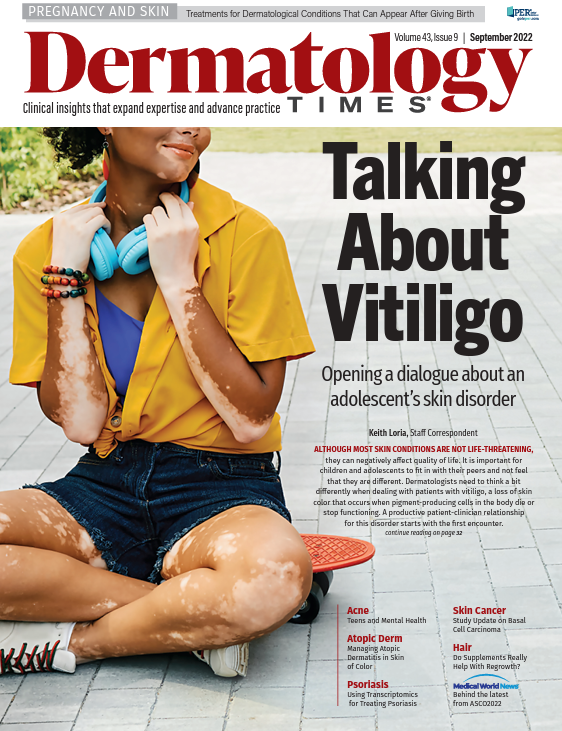- Case-Based Roundtable
- General Dermatology
- Eczema
- Chronic Hand Eczema
- Alopecia
- Aesthetics
- Vitiligo
- COVID-19
- Actinic Keratosis
- Precision Medicine and Biologics
- Rare Disease
- Wound Care
- Rosacea
- Psoriasis
- Psoriatic Arthritis
- Atopic Dermatitis
- Melasma
- NP and PA
- Skin Cancer
- Hidradenitis Suppurativa
- Drug Watch
- Pigmentary Disorders
- Acne
- Pediatric Dermatology
- Practice Management
- Prurigo Nodularis
- Buy-and-Bill
Publication
Article
Dermatology Times
Microbiome Musings
Author(s):
In this month's Cosmetic Conundrums column, Zoe Diana Draelos, MD, discusses microbiomes in dermatology and skin care.
What does "microbiome friendly" mean on skin care product labels?
The microbiome is a hot research and product development topic. As dermatologists, we are really microbiome physicians managing many skin diseases representing dysbiosis, such as impetigo, atopic dermatitis, seborrheic dermatitis, and acne. It is compelling to think that by changing the microbiome with a skin care product you could manage these common diseases. This has captivated the imagination of cosmetic chemists. Unfortunately, creating products that change the microbiome has proved very difficult, and assessing the change requires large numbers of participants in extensive, expensive consumer testing.
This has led to the adoption of the term microbiome friendly. It means the product basically does not change the microbiome. Is this important? Yes, because the microbiome is necessary for skin health and is determined by the immune system. Skin devoid of a microbiome is susceptible to the overgrowth of pathogenic organisms. Is it possible to permanently destroy the microbiome? No. The microbiome can be altered temporarily by cleansing, for example, but is restored back to the organism mix unique to the individual as nonpathogenic organisms quickly reproduce. Thus, most skin care products are microbiome friendly. This claim can be supported by swabbing and culturing the microbiome before and after product application and noting minimal change in the organism amount and species mix. Although microbiome friendly is an important claim, it can be easily achieved with most cosmetic skin care products.
How do products work with the microbiome to sustain skin health?
Working with your microbiome is another commonly used phrase on the labels of skin care products. It really means the same thing as microbiome friendly. Both claims indicate the microbiome does not change with product use. However, the microbiome can change temporarily, which could cause problems with skin health. For example, if you shake hands with a person infected with methicillin-resistant Staphylococcus aureus (MRSA) and transplant the organism onto your skin, you have experienced a change in your microbiome. If you wash your hands immediately, the detergent, rubbing, and rinsing will most likely remove the MRSA, which was a transient organism on your skin. If you do not wash your hands and then put your finger inside your nose, the organism could become a part of your nasal mucosa microbiome, reproduce, and create an infection. The purpose of hand washing for hygiene purposes is to remove transient pathogenic organisms from the skin surface. You might say that all cleansers, no matter what type, work with your microbiome to sustain skin health simply by removing transient pathogenic organisms.
You could also say that all moisturizers work with your microbiome to sustain skin health by improving the skin barrier. An intact barrier without microfissures due to dehydration is better at preventing the entry of bacteria into the skin. Moisturizers also create an environment for barrier repair by decreasing transepidermal water loss. This also improves skin health and prevents the entry into the viable epidermis of pathogenic organisms.
Can skin care products really change the skin microbiome?
Cleansers can transiently change the microbiome, but what about moisturizers? There are several categories of moisturizer formulations designed to modify the microbiome. One category contains ingredients designed to improve the growth of good bacteria. The most commonly used ingredient for this purpose is inulin, a dietary fiber composed of polysaccharides, that functions as a prebiotic. The other category contains live bacteria designed to repopulate the skin with good bacteria and is known as a probiotic. Under excellent conditions, the skin only retains approximately 16% of the bacteria in a probiotic, and even these bacteria disappear over time. True probiotic preparations with live bacteria must be refrigerated. They cannot contain preservatives, which function in room temperature formulations to kill bacteria. Most currently marketed room temperature probiotic formulations contain dead lyophilized bacteria incapable of colonizing the skin. Thus, I would say that skin care products may temporarily change the skin microbiome, but the change is likely not durable.






